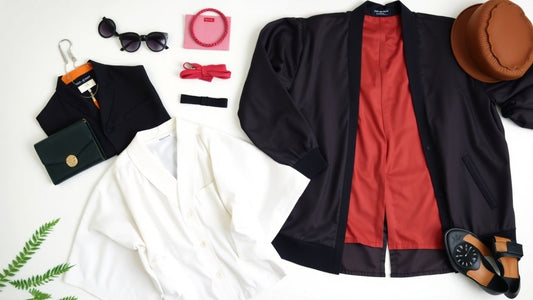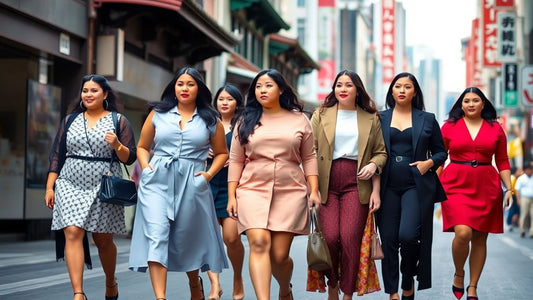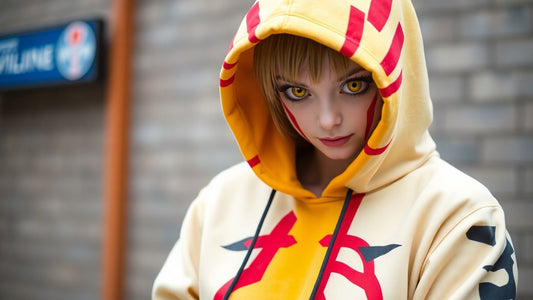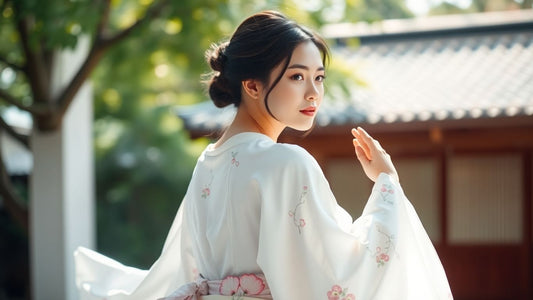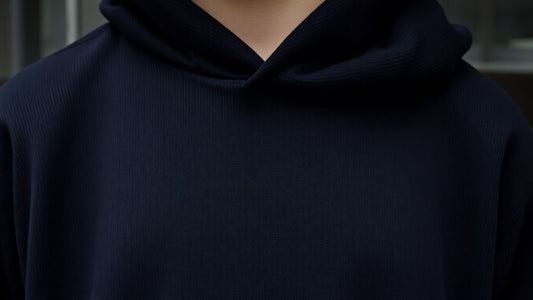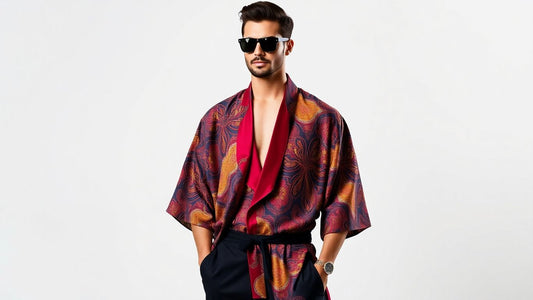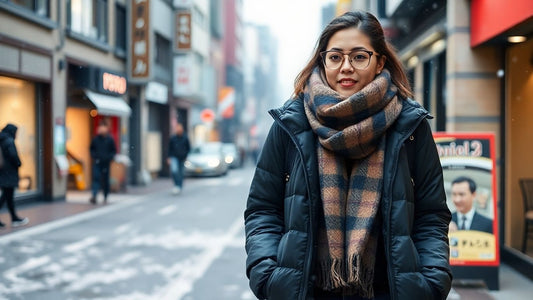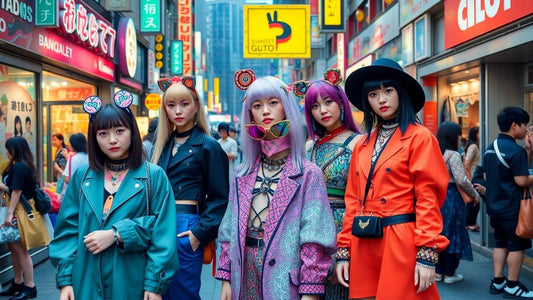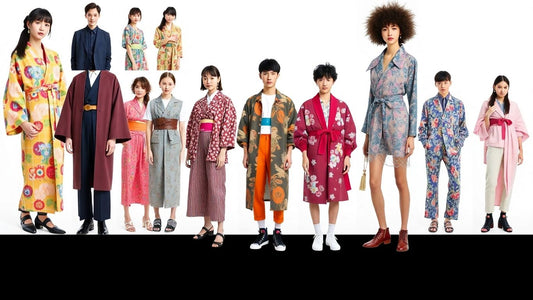
The Essential Guide to Japanese Haori Kimono: Style, History, and Where to Buy
Thinking about adding a touch of Japanese elegance to your wardrobe? The japanese haori kimono might be just what you're looking for. It's a versatile piece with a rich history, and understanding it can open up a whole new world of style. This guide will walk you through what a haori is, its historical journey, how to wear it, and where you can find one. Get ready to explore this fascinating garment.
Key Takeaways
- The japanese haori kimono is a traditional Japanese jacket, often worn over other kimono or as a stylish outer layer.
- Historically, haori were worn by men, particularly samurai, and later became a symbol of status, but women also adopted them for fashion.
- Modern styling allows the japanese haori kimono to be paired with both traditional kimono and contemporary Western clothing like jeans.
- Authentic haori are often made with traditional techniques, using materials like silk and featuring hand-dyed patterns.
- You can find a japanese haori kimono in Japanese markets, specialized online stores, or even rent them for special occasions.
Understanding The Japanese Haori Kimono

So, what exactly is a haori? Think of it as a traditional Japanese jacket, sort of like a formal overcoat that you wear on top of your kimono. It's not meant to be buttoned up like a regular jacket; instead, it's usually left open or tied loosely in the front with a cord. While you might see them in various lengths, they're most commonly found at hip or thigh length. Historically, the haori was a garment primarily for men, but its fashion journey has seen it adopted by women too.
What Is A Haori?
A haori is essentially a hip- or thigh-length jacket that's worn over a kimono. It's not a primary garment like a kimono itself, but rather an outer layer that adds a touch of formality and style. Unlike a kimono, which is wrapped and secured, a haori is typically worn open or fastened with a simple tie called a himo. This makes it a versatile piece that can be added to various traditional outfits.
The Haori's Historical Significance
The haori has a pretty interesting past. Originally, it was worn by samurai and other upper-class men, sometimes even over their armor, as a sort of protective outer layer or a symbol of status. It wasn't until the Edo period (1615-1868) that women started wearing them, influenced by geisha who adopted them as a fashionable statement piece, mimicking men's attire. Over time, the haori transitioned from a strictly male garment to something women wore for practical reasons, like keeping their kimono clean, and eventually as a stylish addition to their wardrobe.
Haori Versus Hanten: Key Differences
It's easy to get haori and hanten mixed up, but they're actually quite different. A hanten is typically a padded, warmer jacket, often made for everyday wear, especially in colder months. Think of it more like a cozy, casual work jacket. A haori, on the other hand, is generally lighter, less padded, and considered more formal. While a hanten might be worn by anyone for warmth, a haori was historically associated with higher social classes and is worn over a kimono for a more refined look.
Here's a quick breakdown:
- Haori: Lighter, more formal, worn over kimono, historically associated with status.
- Hanten: Often padded, warmer, more casual, everyday wear, especially for warmth.
While both are outer garments worn over other clothing, their purpose, formality, and historical context set them apart. A haori adds a layer of elegance, whereas a hanten provides practical warmth.
A Journey Through Haori Kimono History
The haori, that stylish jacket-like garment, has a history that's as rich and layered as the textiles it's made from. It wasn't always the fashion statement we see today, though. Its journey from a practical outer layer to a symbol of status and style is pretty fascinating.
Origins and Evolution of the Haori
The haori's story really begins as an outer garment, a sort of coat worn over the kimono. Initially, it was primarily a male garment, often seen as part of formal attire, especially for samurai. Think of it as a way to add a layer of formality and protection. It wasn't until later, during the Edo period, that women started to adopt it, initially as a way to keep their kimonos clean when out and about. This shift shows how clothing styles can evolve and cross gender lines over time. The basic T-shape of Japanese clothing, which is the ancestor of the kimono, has been around for a very long time, influenced by Chinese styles in earlier periods like the Nara era. But the haori as a distinct piece really developed its own identity later on.
The Haori in Edo Period Fashion
The Edo period (1615-1868) was a real turning point for the haori. This was when it started to move beyond just being a practical outer layer. Merchants, who were becoming increasingly wealthy, began to wear haori as a way to signal their status, even though sumptuary laws tried to restrict such displays. It became a way to look respectable and somewhat formal without being overly ostentatious. Geisha also played a role in popularizing the haori for women, adopting it in a way that mimicked men's attire, adding a touch of chic to their look. This period really cemented the haori's place in Japanese fashion, showing its adaptability.
Modern Interpretations of the Haori
Today, the haori has found a new life, blending its traditional roots with contemporary style. While you might still see it worn with a full kimono for special occasions, it's also become a popular item for everyday wear. Designers and fashion enthusiasts are pairing haori with jeans, skirts, and Western-style dresses, creating unique and eye-catching outfits. It's a way to bring a piece of Japanese heritage into modern wardrobes. You can find haori in all sorts of fabrics and patterns now, from traditional silks to more casual cottons, making them accessible for a wide range of styles. It's amazing how a garment with such a long history can still feel so fresh and relevant. If you're looking to add a unique piece to your wardrobe, exploring traditional Japanese clothing is a great start.
Styling Your Japanese Haori Kimono
So, you've got yourself a haori, or maybe you're thinking about getting one. Awesome! These jackets are super cool, and honestly, they're not as tricky to style as you might think. Forget the idea that they're only for super formal events or historical reenactments. You can totally rock a haori in a bunch of different ways, whether you're going full traditional or just want to add a little something special to your everyday look.
Pairing Haori with Traditional Kimono
This is where the haori really shines in its original context. When you're wearing a kimono, a haori acts like the perfect finishing touch. Think of it as a stylish jacket that adds an extra layer of elegance and warmth. For men, a formal black haori is often paired with a kimono and hakama for ceremonies. For women, it can be worn over a kimono to add a pop of color or pattern, or simply for a bit of extra modesty and protection from the elements. The key is to make sure the colors and patterns complement each other without clashing. A simple, solid-colored kimono might look great with a patterned haori, or a richly decorated kimono could be balanced with a more subdued haori.
- Formal Occasions: For events like weddings or tea ceremonies, opt for a formal haori, often in darker, solid colors for men, or intricately patterned ones for women, worn over a matching kimono.
- Casual Kimono Wear: If you're wearing a more casual kimono, like a yukata or a simple cotton kimono, a lighter, more relaxed haori can be a great addition. This is common in hot spring resorts where you might be given a haori to wear over your sleepwear.
- Color Coordination: Pay attention to the obi (sash) and the kimono itself. The haori should either harmonize with these elements or provide a deliberate, stylish contrast.
Incorporating Haori into Modern Outfits
This is where things get really fun. A haori isn't just for kimonos anymore. You can totally wear it with your regular clothes! It's like a unique, stylish jacket that instantly makes any outfit more interesting. Seriously, try it. You'll be surprised at how well it works.
- With Jeans and a T-shirt: Throw a haori over a simple t-shirt and jeans. It adds a touch of sophistication to a casual look. Roll up the sleeves of the haori for a more relaxed vibe.
- Over Dresses: A haori can look amazing over a simple slip dress or even a more structured dress. It adds a layer of texture and visual interest.
- With Trousers and Blouses: Pair a haori with tailored trousers and a nice blouse for a smart-casual look that's perfect for work or a nice dinner out.
- Layering: Don't be afraid to layer! A haori can be worn over sweaters, hoodies, or even other light jackets, depending on the weather and the look you're going for.
The haori's versatility is its superpower. It bridges the gap between traditional Japanese aesthetics and contemporary fashion, making it a unique piece for any wardrobe.
Accessorizing Your Haori Look
Once you've got your haori styled, it's time to think about the little things that tie it all together. Accessories can really make your haori outfit pop, whether you're going traditional or modern.
- Obi (Sash): If you're wearing a haori with a kimono, the obi is key. You can choose a contrasting obi to make it stand out, or a matching one for a more cohesive look.
- Footwear: With traditional wear, consider zori or geta. For modern outfits, sneakers, boots, or even heels can work, depending on the overall style.
- Jewelry: Keep it simple. A delicate necklace or some understated earrings can complement the haori without overpowering it. If the haori has intricate patterns, less is often more with jewelry.
- Bags: A small clutch, a traditional drawstring bag (kinchaku), or even a stylish crossbody bag can complete the look. Choose something that fits the formality of your outfit.
The Craftsmanship of Japanese Haori
When you look at a haori, it's not just a jacket; it's a piece of art. The way these garments are made tells a story of tradition, skill, and a whole lot of patience. The intricate details and the quality of the materials are what really set a haori apart. It's this dedication to the craft that has kept haori relevant for centuries.
Traditional Dyeing Techniques
Think about how you'd dye a t-shirt. Probably dunk it in some color, right? Well, with haori, it's a whole different ballgame. Many traditional dyeing methods involve a lot of manual work before the fabric even sees dye.
- Shibori: This is a big one. It's a technique where parts of the fabric are tied, stitched, or clamped before dyeing. This prevents the dye from reaching those areas, creating amazing patterns. You can get anything from tiny dots to complex geometric shapes, all depending on how the fabric is manipulated.
- Yuzen: This method is like painting on fabric. A paste is used to outline the design, and then dyes are applied within those lines. It allows for very detailed and colorful images, often depicting nature scenes or traditional motifs.
- Katazome: This involves using stencils to apply dye. A resist paste is applied through a stencil, and then the fabric is dyed. It's great for repeating patterns and can create bold, graphic designs.
The process of dyeing a haori is often a multi-step affair, with artisans meticulously preparing the fabric, applying dyes, and then rinsing and drying. Each step requires precision to achieve the desired outcome, and mistakes can be costly, both in time and materials.
Materials and Construction
What a haori is made of really affects how it looks and feels. Most traditional haori are made from silk, which gives them that beautiful drape and subtle sheen. But you'll also find them in other materials, depending on the era and intended use.
| Material | Characteristics |
|---|---|
| Silk | Smooth, lustrous, drapes well, breathable |
| Cotton | Softer, more casual, good for everyday wear |
| Linen | Lightweight, breathable, prone to wrinkling |
| Synthetic Blends | Durable, easier care, less traditional feel |
The construction itself is also key. Haori are typically unlined or partially lined, making them lighter than a Western jacket. The seams are often finished with care, and the way the fabric is cut and sewn contributes to the garment's elegant silhouette. It's all about creating something that looks good and feels comfortable when worn over a kimono.
The Artistry of Hand-Dyed Patterns
Beyond the dyeing techniques, it's the patterns themselves that showcase the artistry. You'll see everything from subtle, all-over textures created by shibori to elaborate scenes painted with yuzen. Many patterns have symbolic meanings, too. For example, cranes might represent longevity, while cherry blossoms symbolize the fleeting nature of life.
- Geometric Patterns: Often precise and repeating, these can range from simple stripes to complex tessellations.
- Nature Motifs: Flowers, birds, waves, and clouds are common, reflecting a deep connection to the natural world.
- Abstract Designs: Sometimes, the beauty is in the flow of color and form, without a specific representational image.
Each haori is a unique creation. Even when using the same technique, the hand of the artisan means no two pieces will be exactly alike. It's this individuality that makes collecting and wearing haori so special.
Where To Find Authentic Japanese Haori Kimono

So, you've decided you want to get your hands on a haori. That's awesome! These jackets are seriously cool, blending history with a style that just works, even today. But where do you actually find one that's the real deal, not some cheap imitation? It can feel a bit like a treasure hunt, but don't worry, I've got some ideas for you.
Navigating Japanese Markets and Districts
If you're lucky enough to be traveling in Japan, hitting up local markets and traditional districts is a must. Think of places like Asakusa in Tokyo or the Gion district in Kyoto. These areas often have shops that specialize in traditional Japanese clothing. You might find vintage haori tucked away in antique shops or specialty kimono stores. It's a bit of a gamble, but the thrill of finding a unique piece is totally worth it. Plus, you get to soak in the atmosphere of these historic places.
- Tokyo: Harajuku might seem modern, but it's a great spot to see how younger generations mix traditional pieces like haori with streetwear. You'll also find shops selling vintage clothing.
- Kyoto: Known for its traditional vibe, Kyoto has numerous kimono rental shops and antique stores that might carry authentic haori.
- Osaka: Explore areas like Shinsaibashi for a mix of modern and traditional shops, including those with vintage clothing.
Online Retailers for Haori Kimono
Let's be real, not all of us can hop on a plane to Japan anytime soon. The good news is the internet has made finding these unique garments much easier. There are quite a few online stores that focus on Japanese textiles and vintage clothing. You just need to know where to look. Some sites specialize in vintage kimono and haori, offering a wide selection. Others might be smaller shops run by artisans or collectors.
When shopping online, always check reviews and look for detailed descriptions and photos. It's also a good idea to understand the seller's return policy, just in case.
Here are a few types of places to check:
- Dedicated Vintage Kimono Sites: These are your best bet for authentic, older pieces. They often have detailed information about the item's history and condition.
- General Online Marketplaces: Sites like Etsy or eBay can have sellers offering haori, but you'll need to be more careful about authenticity and condition.
- Japanese Department Store Websites: Some larger Japanese department stores have online shops that might carry new or curated vintage haori.
Renting Haori for Special Occasions
If you're looking to wear a haori for a specific event, like a themed party, a photoshoot, or even a wedding if you're feeling adventurous, renting is a fantastic option. Many kimono rental shops in Japan, especially in tourist-heavy areas, offer haori as an add-on to their kimono rentals. This way, you get to experience wearing one without the commitment of buying. It's also a more budget-friendly choice for a one-time wear.
Renting is a smart way to try out different styles and see how you feel wearing a haori. It's a temporary immersion into traditional Japanese fashion, perfect for creating memorable photos or simply enjoying the unique aesthetic for a day.
It's worth noting that while haori were historically men's wear, they've become popular with women too, so rental options often cater to both. Just be sure to ask if a haori is included or available as an extra when you book your kimono rental.
The Cultural Significance of Haori Kimono
The haori, that stylish jacket we've been talking about, isn't just about looking good. It carries a lot of history and meaning in Japanese culture. It's one of those garments that really shows how clothing can be tied to social standing and special events.
Haori in Ceremonial Japanese Attire
When it comes to formal Japanese events, the haori plays a pretty important role, especially for men. Think of weddings, graduations, or coming-of-age ceremonies. For these big moments, men often wear a formal black haori over their kimono, sometimes with a hakama too. This combination is seen as the peak of traditional formal wear for men. It's a bit like how a tuxedo is in Western culture – it signals respect and seriousness for the occasion. Often, you'll see family crests embroidered on these ceremonial haori, adding an extra layer of personal and familial significance.
Haori as a Symbol of Status
Back in the day, who could wear a haori really said something about their place in society. Originally, it was pretty much only for the upper classes. It was a way to show off wealth and social standing. Over time, though, it became more accessible. Women started wearing them, partly as a fashion statement inspired by geisha, and partly as a practical outer layer to keep their kimono clean. So, while it started as a clear marker of high status, its use broadened, showing how fashion can evolve and spread.
The Haori in Contemporary Japanese Culture
Today, you don't see haori worn as everyday formal wear as much, mostly because kimonos themselves aren't worn daily by most people. But they haven't disappeared! You'll still find them at special events, and they've become really popular as a stylish outer layer for modern outfits. People mix them with jeans or other Western clothes to get that unique Japanese flair. Also, in places like traditional inns (ryokan) or hot spring resorts, you might be given a haori to wear over your yukata, which is a nice way to experience a bit of the tradition.
Here's a quick look at how haori's role has shifted:
- Past: Primarily formal wear for men, a clear sign of social status.
- Edo Period: Women adopt it for style and practicality.
- Modern Day: A fashion statement, a nod to tradition, and sometimes a comfort item in hospitality settings.
The haori's journey from a strict symbol of class to a versatile fashion piece shows how cultural items can adapt and find new life. It’s a garment that bridges the past and the present, offering a touch of elegance and history to whoever wears it.
Wrapping It Up
So, that's the lowdown on Japanese haori. It's pretty cool how this piece of clothing has managed to stick around, right? From its fancy beginnings to being worn by everyone, and now showing up in modern fashion, the haori has seen it all. Whether you're looking to add a bit of traditional Japanese style to your everyday outfits or just appreciate the history behind it, the haori is definitely worth checking out. You can find them in vintage shops, online, or even rent one if you're visiting Japan. It’s a great way to connect with a rich cultural tradition. Give it a try – you might be surprised how versatile and stylish it can be!
Frequently Asked Questions
What exactly is a haori?
A haori is like a jacket that you wear over a kimono. Think of it as a stylish outer layer. In the past, it was a bit fancier and mostly worn by wealthier people, but now it's a cool way to add something extra to your outfit.
Are haori and hanten the same thing?
Not quite! A hanten is also a type of Japanese jacket, but it's usually padded and warmer, like a cozy winter coat. A haori is generally lighter and more formal, meant to be worn over a kimono.
Can I wear a haori with regular clothes?
Absolutely! While haori were traditionally worn with kimonos, they look great with modern outfits too. Try pairing one with jeans, a t-shirt, or even a dress to give your look a unique Japanese flair.
Where can I buy a real Japanese haori?
You can find authentic haori in Japan, especially in places like Tokyo's Harajuku district, where people mix traditional styles with modern fashion. There are also many online stores that sell vintage and new haori.
Are haori only for special events?
Not anymore! While they were once worn for important ceremonies, haori are now seen as a stylish fashion item. You can wear them for everyday outings or dress them up for parties and gatherings.
How did haori become popular with women?
Originally, haori were mostly for men. But in the Edo period, geishas started wearing them as a fashion statement. Later, women wore them to keep their kimonos clean when they went out, and they became a popular part of women's fashion.
